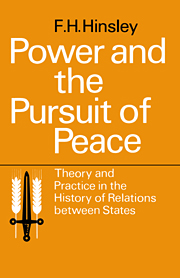Summary
We cannot say who first devised a plan for perpetual peace: the aim cannot be much less old than the practice of war. The interest men have shown in this aim―the concern they have felt at the absence of peace or for the maintenance of peace―has fluctuated throughout history. It has been most intense during and immediately after periods of especially frequent, especially extensive or especially destructive war. Such periods have occurred at all times, in the fifth century B.C. no less than during the past fifty years. Perhaps the first step to sanity in facing this problem is the realisation that it is not a new one. Even so, if only because war has become increasingly more extensive and destructive―though not more frequent―since the sixteenth century, the interest in peace, while continuing to be more than usually acute from time to time, has become more intense, more widespread and more continuous throughout modern times.
In the history of modern Europe it was only rarely before the eighteenth century that proposals for the solution of international problems were devoted primarily to the preservation of peace. Interest in peace for its own sake was more extensive and unbroken during the nineteenth century, a period of comparative peace, than in the eighteenth century with all its wars.
- Type
- Chapter
- Information
- Power and the Pursuit of Peace: Theory and Practice in the History of Relations Between States , pp. 1 - 10Publisher: Cambridge University PressPrint publication year: 1962



